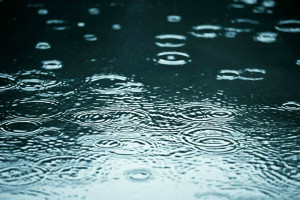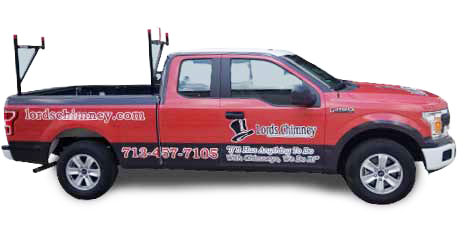If you are buying a home, scheduling a home inspection is a necessary step in the process. Yet, many home buyers mistakenly believe a home inspection includes a thorough and in-depth look at the fireplace and chimney. This is not the case! Home inspectors are not actually required to inspect various parts of your chimney. This means you could be missing out on important information regarding your potential home purchase.
What’s Not Included?
Some of things home inspectors are not required to inspect are seals, gaskets, doors, vents, and any interiors that are not easy to access. Their standard of practice states that anything not “readily accessible” does not need to be inspected. That means the interior of the chimney itself was likely not even looked at!
While home inspections are beneficial in many ways, hiring a certified chimney tech to inspect your fireplace and determine whether or not it is safe for regular use is necessary for making a smart decision when seeking out your new home.
Level I, II, & III Chimney Inspections
At Lords Chimney, we are CSIA certified, which means we can perform top quality inspections, no matter what your fireplace needs. When the technician comes to your home, they will perform either a level I, a level II, or a level III inspection. Learn more about these below!
Level One – A level one inspection occurs when you have had no major issues or changes with your fireplace throughout the past year. This inspection is a basic overview of all the parts. We check to ensure everything is running smoothly and that no obvious repairs are necessary. Also, we will determine whether or not a sweeping is in order and will make sure the venting systems are clear.
Level Two – Level two inspections are a bit more extensive. A camera will be used to check the interior systems. We will check for water damage, correct measurements, chimney caps, and more. These types of inspections are for buying and selling homes or for when a chimney has faced damage or recent renovations.
Level Three – Level three inspections are less common and are done when more widespread damage is discovered. Certain parts of the chimney may need to be removed for us to discover the issue and resolve it.
Any Questions?
Knowing what to expect from your chimney company can be tricky. If you have any questions at all, feel free to give the staff at Lords Chimney a call 281-497-4000. We will be more than happy to assist you. We will provide you with all of the answers and advice you are looking for.
When it comes to chimney maintenance, many homeowners are on the lookout for fast and easy fixes. One popular product on the market today that promises to clean your chimney is chimney sweeping logs. For about $20 these products seem like a fast, cheap, and easy alternative to having your chimney swept. However, chimney sweeping logs should never be used as an alternative to a professional chimney cleaning.
How Are Chimney Sweeping Logs Dangerous?
Chimney sweeping logs advertise themselves as an alternative to a professional chimney sweeping. As they burn, the smoke from the logs loosens creosote in the flue; as it loosens, the creosote then falls down and into the firebox where it can be easily removed.
While this may work in theory, it often fails when put into practice. Because most chimneys do not have straight, vertical flues, the loosened creosote often winds up trapped in the bends of the flue.
…the loosened creosote often winds up trapped in the bends of the flue.
Accumulated creosote can cause a few major problems:
- Creosote is extremely flammable. Having accumulated creosote in the bends of the flue increases the risk of chimney fire should any stray sparks and embers travel up the flue.
- Large amounts of fallen creosote sitting in the bends of the flue can cause chimney blockages. These types of blockages can impact venting, as well as cause gas and smoke to flow back into your home instead of up the chimney.
- Using a chimney sweeping log can make it more difficult to clean your chimney in the future. The fallen loosen creosote can accumulate in the smoke shelf above the firebox – one of the most difficult to reach and clean areas of the chimney.
Chimney Sweeping Logs Can’t Replace a Professional Sweeping
Chimney sweeping logs might seem like a cheap and easy alternative to a professional chimney sweeping, but they can actually do more harm than good.
“I usually tell people using one of those logs instead of having your chimney cleaned manually is like chewing Dentyne instead of brushing your teeth,” said Allan Bopp of Bald Eagle Enterprises. “It may help a little, but it’s a poor substitute for the real thing.”
Even if they can help to loosen creosote, chimney sweeping logs cannot replace the benefits of having a professional sweep and inspect your chimney. A certified chimney professional is able to identify any signs of chimney damage or deterioration during a cleaning; oftentimes, spotting problems early can help prevent serious damage – as well as expensive repairs.
While chimney sweeping logs work in theory, using one can cause serious problems within your chimney system. Instead, skip the chimney sweeping log altogether and let a professional chimney sweep keep your chimney clean – and your family safe.
Schedule With Us Today
Ready for some quality, professional care? Contact Lords Chimney today to schedule your next chimney sweeping!
While the bricks and mortar of your chimney is designed to withstand the elements, there is one force that can cause serious damage – water. Moisture can wreak havoc throughout your chimney system, causing leaks, rusty parts, and masonry deterioration. However, the presence of moisture can also show itself in unique ways, including chimney discoloration or staining. The following guide can help you identify the kind and source of your chimney staining – as well as how you can keep it from coming back in the future.

Red or brown stains
If you have a prefabricated or factory built chimney, red or brown stains on the chimney chase are often the result of rusting. Long-term exposure to moisture – especially from puddles of standing water – can cause the galvanized metal found in many chimney chase covers to deteriorate and rust. The rusting chase top then causes dark red, brown, or orange staining to appear on the sides of the chimney. Rusted chase covers should be replaced with sturdier metals such as stainless steel or copper to prevent rusting from occurring again.
White stains
Crystalline or powdery white stains or discoloration are caused by a phenomenon known as efflorescence. Efflorescence occurs when water trapped in the masonry evaporates, leaving behind a concentration of white mineral salt.
Efflorescence is more commonly seen in areas where ground or rain water has a high salt content. Water from hoses, sprinklers, or rain can all cause efflorescence to occur. However, interior efflorescence may indicate that you have a leaky chimney; only small amounts of moisture are required to leave behind the mineral white chalky salt after evaporation.
Dark green stains
Dark green stains or discoloration is typically caused by the growth of algae on masonry. In order for this type of discoloration to occur, water must continually flow or pool over one area of the chimney structure. This type of long term exposure to moisture can foster an environment for algae growth – as well as mold or mildew – on the chimney.
What about inside?
While water can wreak havoc on your masonry outside, it can cause an equal number of problems indoors as well. One of the most common signs of a chimney leak is the presence of water in the flue, firebox, or on surrounding walls or ceilings. However, it can be difficult to tell the difference between a roof leak and a leaky chimney; because of this, you may want to have a certified chimney sweep have a look at the chimney before you or your insurance company pay to have the roof inspected and repaired.
Staining on your masonry could indicate that your chimney has a water leak. For more information on identifying chimney stains or to schedule a chimney inspection, contact Lords Chimney today!
Nothing can spoil a quiet evening spent in front of the fireplace quite like chimney odor. Unfortunately, chimney odors can also occur when the fireplace is not in use, leaving many homeowners scratching their heads as to what is causing their stinky chimney.
Chimney odors should never be ignored and are often the sign of a more serious chimney problem. Because of this, it is important to have a certified professional evaluate your chimney in order to uncover the source of the chimney odor and repair the source to keep it from coming back.
Common Causes of Chimney Odor
There is no one cause of chimney odor; because of this, it often takes the combination of a certified chimney professional and a chimney inspection to uncover the source of the odor. Below are some of the most common sources of chimney odor, what causes them, and how they can be prevented.
Water Entry
 Type of odor: Musty or damp odor that may be more noticeable after a rain storm. Long term exposure to moisture in the chimney can cause mold or mildew growth; in addition to creating a round-the-clock odor, mold growth can also affect the air supply in your home, especially for those with respiratory issues such as allergies or asthma.
Type of odor: Musty or damp odor that may be more noticeable after a rain storm. Long term exposure to moisture in the chimney can cause mold or mildew growth; in addition to creating a round-the-clock odor, mold growth can also affect the air supply in your home, especially for those with respiratory issues such as allergies or asthma.- Cause: While water can get into your chimney system in a number of ways, it most commonly comes in from a damaged chimney cap. In addition to protecting the chimney from moisture, chimney caps also keep debris and animals out of the chimney. Likewise, cracks or holes in the masonry can also cause water to enter the chimney system.
- Signs of water entry: Using a flashlight, look in your firebox or the lower portion of the chimney for signs of moisture or water. Likewise, from the ground look for any evidence that the chimney is cracked or otherwise damaged.
Creosote
- Type of odor: Sharp, smoky odor. Creosote smells are often worst during the hot and humid summer months.
- Cause: Creosote is a naturally occurring byproduct of fuel-burning fires, but is most prevalent with wood burning fires. Tarry creosote can coat the inside of the chimney flue and leave you at increased risk for chimney fire. Annual chimney sweeping removes creosote – as well as the odors that can accompany it.
- Other causes of smoky odors: Your smoky chimney odor may also indicate an air pressure problem; outside air flows down the chimney and into your home, bringing chimney odors with it. An improperly fitting damper or the installation of a new HVAC system can cause pressure imbalances.
Animals
 Type of odor: Sharp, foul, rotting odor.
Type of odor: Sharp, foul, rotting odor.- Cause: A sudden rotting smell almost always indicates the presence of an animal or animal droppings in the chimney. Animals can find their way in through a damaged or missing chimney cap or other surrounding masonry damage on the top of the chimney.
- Getting animals out: Wild animals should ways be treated with caution and should only be removed by a professional. Likewise, it is important to never “smoke out” a trapped animal. Rather than getting out of the chimney, many animals become disoriented or injured by the smoke and heat.
Drafting
- Type of odor: Smoky smells or that similar to creosote
- Cause: If your chimney doesn’t draft properly, smoke and gas – as well as chimney odors – can blow back into and linger in your home. Smoky odors from drafting are often present long after the fireplace has been used, especially on hot or windy days. Drafting issues are commonly caused by an improperly sized flue; if you have installed a new fireplace or changed fuel sources, the flue may need to be resized in order to prevent drafting issues.
- Possible resolutions: Resolving could be as simple as installing a chimney cap or as complex as changing the dimensions of your chimney. What’s most important is getting a technician in to get to the bottom of the issue.
We Offer Chimney Odor Resolutions
Stop dealing with foul odors coming from your fireplace. We have effective solutions that work. Contact Lords Chimney and let a certified professional inspect your chimney and start enjoying your heating appliance once more.
Dial 281-497-4000 or book online with us now.
Whether it’s a musty or moldy smell, a soft drip-drip sound coming from the chimney, or a puddle of water at the bottom of the firebox, a leaky chimney is a problem that cannot be ignored. Left unrepaired, even minor chimney leaks can create major damage throughout your fireplace system.
Thankfully, leaky chimneys don’t have to be a chronic problem. Identifying the source of the water entry and fixing your leaky chimney as soon as possible can prevent serious water damage to your fireplace system or home.

What causes chimney leaks?
Chimneys are built to stand strong against the elements; however, there are still a number of points where water can work its way into the chimney system. The following are some of the most common causes of chimney leaks.
Chimney cap: The chimney cap protects the top of the chimney and keeps moisture, animals, and debris from falling into the chimney. A damaged chimney cap can allow water into the flue, causing damage throughout the fireplace and chimney structure.
Chimney crown: Often confused with the chimney cap, the chimney crown is a mortar slab that seals the top of the chimney. Chimney crowns should have small overhangs as well as be built with slightly sloped edges to prevent water from pooling on the top. Chimney crowns can deteriorate over time due to prolonged exposure to the elements; this creates cracks that allow moisture into the chimney.
Flashing: Flashing is the watertight metal strips that seals the joint between the chimney and the roof. Over time, flashing can lose its seal due to overexposure to the elements; flashing can also be damaged by storms or animals.
Masonry damage: Without regular maintenance, bricks and mortar can begin to deteriorate over time. The freeze thaw process – which causes water in bricks to freeze and expand – is the most common cause of water damage to masonry.
Fixing a leaky chimney
When it comes to fixing a leaky chimney, the most important step is to find and repair the cause of the chimney leak. Repairing the water damage without first removing the cause of the chimney leak will only lead to recurrent water problems. By uncovering the root cause of the chimney leak, you can rest assured that the water damage will not return once the necessary repairs have been made.
For chimneys with damaged masonry, tuckpointing may be used to repair or replace damaged bricks and mortar. During the tuckpointing process, small areas of damaged masonry are carefully removed before the new bricks and mortar are put in; this can help strengthen the chimney structure and help avoid the costs of rebuilding the entire chimney.
Another great way to prevent chimney leaks and water damage is by having your chimney waterproofed. Professionally waterproofing a chimney can seal and protect the masonry from water damage while still allowing the bricks to retain their semi-porous nature.
If you have a leaky chimney, trust the experts at Lords Chimney to repair it. Contact us today to schedule an appointment so we can help resolve your chimney leaks!



 Type of odor: Musty or damp odor that may be more noticeable after a rain storm. Long term exposure to moisture in the chimney can cause mold or mildew growth; in addition to creating a round-the-clock odor, mold growth can also affect the air supply in your home, especially for those with respiratory issues such as allergies or asthma.
Type of odor: Musty or damp odor that may be more noticeable after a rain storm. Long term exposure to moisture in the chimney can cause mold or mildew growth; in addition to creating a round-the-clock odor, mold growth can also affect the air supply in your home, especially for those with respiratory issues such as allergies or asthma. Type of odor: Sharp, foul, rotting odor.
Type of odor: Sharp, foul, rotting odor.